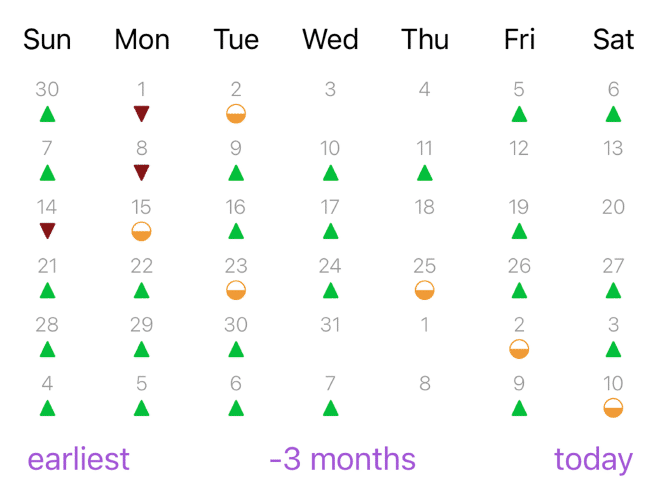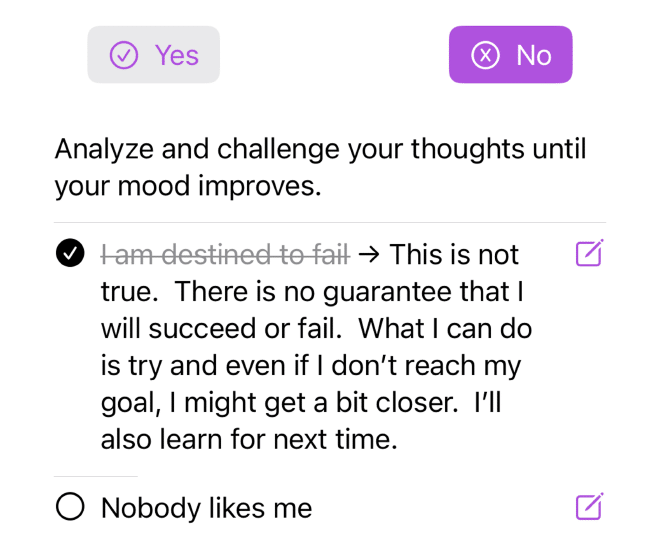Moments and Workflows
Table of Contents
The Feel Less Bad is organized around two main concepts, Moments and Workflows.
What is a “Moment”? #
The app is built around the concept of a Moment. We believe it is important to focus on the present and how you are feeling right now.
By using the app regularly you will create a history of which days were pleasant ▲, balanced ⊖ or unpleasant ▼.
Viewing your Moments over months provides data and trends into how you are feeling and what is causing your pleasant or unpleasant days.

The Workflows #
The app provides two workflows
- Write a journal entry
- Challenge my thoughts
The journal workflow is a free form text entry mode for you to write down anything you like. Use it to record important details about the moment or as a scratch pad to just write.
Challenge My Thoughts Workflows #
The Challenge my thoughts workflow is main purpose of the app. It is an eight step workflow designed to guide you step by step to feeling less bad.
You can jump to any stage of the workflow. A feeling may become clearer, or a new thought may be easier to articulate as you work through a Moment.

Steps 1, 2, 3 #
The first three steps are standard and shared with the Journal mode. Every Moment starts by recording your feelings and thoughts.
The third step is choosing Journal or Challenge my thoughts.
See Recording Your Mood and Thoughts for suggestions on developing this skill.
Step 4: The Facts #
In this step you are to identify the facts about the situation. Having a list of what is objectively true helps us in the next step when we are identifying the cognitive distortions in our thoughts.
We suggest using the Facts and Opinions article for strategies on identifying the difference between facts and opinions.
Step 5: Cognitive Distortions #
The app has eleven of the most common types of cognitive distortions that cause distorted negative thoughts. Being able to identify and recognize how they are distorting your thoughts is crucial for developing a more realistic perspective in the next step.
See The Cognitive Distortions for descriptions and strategies for identifying each type of distortion.
Step 6: Reframing #
Reframing is a powerful and widely used Cognitive Behavioral Therapy (CBT) technique. In this stage you take the work you’ve done identifying facts and the distortions to write a new perspective on what is happening.
Learning about Reframing with examples and strategies for applying it.
Step 7: Feeling Better? #
Sometimes, a bad mood needs a bit more work to reduce it.
In this step, go deeper. Identify the distortions and reframe each thought until your mood improves.

Step 8: Summary #
It is normal for distorted negative thoughts to resurface again in the future. The work you put in to challenge and reframe a Moment will be useful in when that happens.
In this final step, write a brief summary of your work in this Moment to make it easier to reuse it in the future.